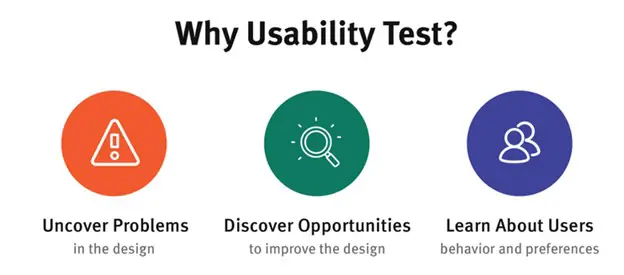The ins and outs of content testing for transformative content
Digital platform testing is imperative in creating transformative content and gaining a competitive edge. Keep reading for four types of experiments to perform.

Why does an organization need transformative content? Over 2.14 billion people will be shopping online in 2021, constituting one-fourth of the world’s population. Furthermore, that number will only continue to grow.
That trend is what motivates digital transformation. If a business didn’t have an online presence before, it’s vital to have one now. If a company already has a website, it needs to keep up with consumer behavior and innovations in technology to adapt its user experience accordingly. Here, digital platform user testing becomes essential.
What are the benefits of testing? What types of experiments can a business perform against its digital platform to improve its content strategy? Let’s closely examine these questions.
Key takeaways:
-
Digital platform testing is imperative for obtaining high conversion rates and retaining customers, which provides an edge over the competition.
-
Four types of content testing are functional, usability, performance and A/B testing.
-
Before any testing, define the success criteria.
-
Optimizely offers a streamlined process to test content to maximize your digital transformation efforts.
There are many benefits to running content experiments, some advantages include:
Increased conversion rates
Having a user visit your site is no longer the great victory it used to be. Today, the real goal for a business is to encourage a user to click on a product, add to the shopping cart, make a purchase or create a subscription. Forbes reported that “the global average conversion rate for ecommerce websites is around 4.31% and that of the U.S. is close to 2.63%.” How is your business doing in this aspect? Is there room to improve your conversion rates? Content testing can help.

Image: https://www.crazyegg.com/blog/conversion-rate-optimization/
Customer retention
Experiments reveal pain points in a customer’s digital experience that you can address. Perhaps the checkout process takes too long, or maybe the website navigation isn’t that simple. Issues like these drive away customers, but a solid set of tests can help prevent it.
By increasing conversion rates and customer retention, you’d gain a competitive edge in digital transformation. Customers trust your business partly due to optimizations made across all your digital channels due to content testing.
4 tests that optimize transformative content
Digital platform testing spans the gamut from hardware performance to button color preference. Before any testing, it’s vital to establish the success criteria. Is it a lower website load time goal, the number of button clicks or the increase in conversion rate?
The following are four kinds of testing that a business can execute:
1. Functional testing
Every website or application has a set of essential functions that must work for a successful customer experience. It could be as simple as verifying that links go to the correct page or as involved as verifying the redirect to a third-party payment method that operates smoothly.
Some tests in this category include:
-
Creating an account
-
Logging in to the app or website
-
Processing a payment
-
Deleting an item from the shopping cart
-
Uploading an image or document
-
Filling out and submitting the “Contact Us” form
-
Clicking on links and buttons
-
Opening the website in different web browsers
2. Usability testing
Usability testing relates to the user’s digital experience. The user should be able to navigate through the site easily and have a trouble-free checkout process. These tests can expose design flaws of the digital channel and help a business make enhancements.

Image: https://www.crazyegg.com/blog/usability-testing/
Examples of usability testing are:
-
Submit a form without filling out the required values. Are the fields all blank after receiving the error message, meaning the user needs to re-enter values?
-
Navigate through the site without a mouse. A user should be able to use the site with only a keyboard.
-
Use the search bar and look for a product. Are the results relevant to the user’s search?
3. Performance testing
The compute, storage and networking resources utilized in running sites and applications need to be robust for the traffic they have to manage. Performance tests ensure that hardware and software components can meet these challenges.
Some performance tests consist of:
-
Checking the load time of each page under normal conditions and then mimicking high traffic and witnessing load time again
-
Simulating peak load conditions and monitoring CPU and memory utilization
-
Analyzing application response time when run from a mobile device
-
Creating an environment with slow network bandwidth and observing site and application performance
4. A/B testing
Companies use A/B testing to determine what aspects of a page appeal more to the user, thereby generating action on the part of that user. For example, version A of a page may contain an orange “Free Trial” button, while version B uses a blue “Free Trial” button.
To establish which version produces more clicks, a company would display one of the two pages to users visiting the site. It could be that 50% of visitors see version A while the other 50% see version B. Whichever version generates the most clicks then becomes the standard page.
A multivariate test is a modification of A/B testing. In this scenario, a company may want to test multiple variables simultaneously. Revisiting the “Free Trial” button test, the business may want to see if a different font type or the button size also makes a difference. Here, the variables are two colors, two font types and two button sizes. When multiplying all the variables, the company displays eight different pages to users and analyzes the results to see which page was the most effective.
Media Block (New): Wistia Video
Boost your transformative content with Optimizely experimentation
Optimizely is the leading platform for A/B testing and conversion rate optimization. Configuring Optimizely is effortless, only requiring the inclusion of a single piece of JavaScript on your site.
Once Optimizely is enabled, the graphical user interface allows you to change your website or app without the need to code. Launching experiments is as simple as clicking the button. Once Optimizely sets up a test, an innovative engine will tell you when a test has reached statistical significance so that you can succeed with digital transformation.
Contact us to see how it works.
